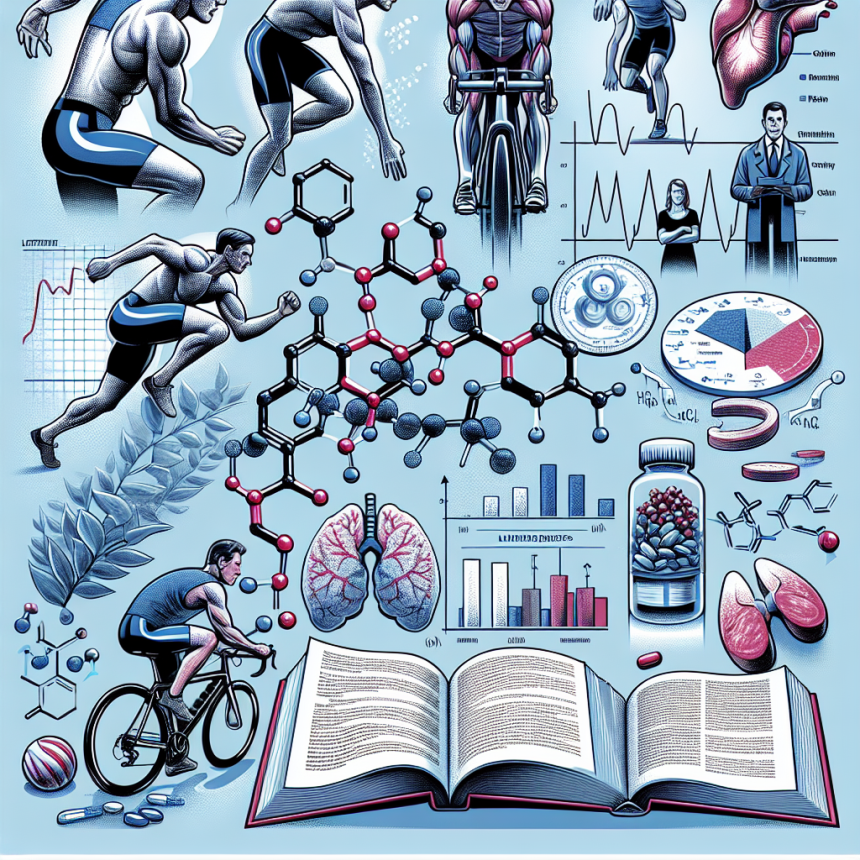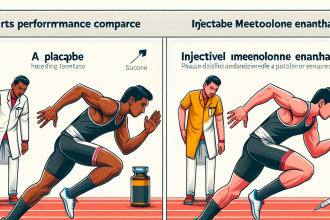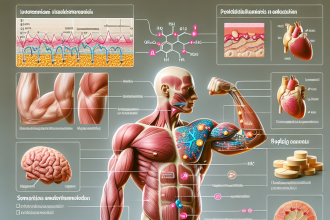-
Table of Contents
The Effects of Exemestane on Sports Performance: A Literature Review
Sports performance is a highly competitive field, with athletes constantly seeking ways to improve their performance and gain a competitive edge. One method that has gained attention in recent years is the use of performance-enhancing drugs, or PEDs. Among these drugs is exemestane, a type of aromatase inhibitor commonly used in the treatment of breast cancer. However, there is growing interest in its potential use in sports performance. In this literature review, we will examine the effects of exemestane on sports performance and its potential benefits and risks.
The Pharmacology of Exemestane
Exemestane is a steroidal aromatase inhibitor, meaning it blocks the conversion of androgens to estrogens. It works by binding to the active site of the aromatase enzyme, preventing it from converting androgens to estrogens. This leads to a decrease in estrogen levels, which can have various effects on the body.
Exemestane has a half-life of approximately 24 hours and is primarily metabolized by the liver. It is also known to have a high bioavailability, meaning that a large percentage of the drug is absorbed and reaches the target tissues. This makes it an effective and efficient drug for its intended use in breast cancer treatment.
The Potential Effects of Exemestane on Sports Performance
While exemestane is primarily used in the treatment of breast cancer, there is growing interest in its potential use in sports performance. Some athletes believe that by reducing estrogen levels, exemestane can increase testosterone levels and improve muscle mass and strength. However, the evidence for this is limited and conflicting.
A study by Demers et al. (2011) found that exemestane had no significant effect on testosterone levels in male athletes. However, a study by Kicman et al. (2015) reported an increase in testosterone levels in male athletes after taking exemestane. These conflicting results suggest that more research is needed to fully understand the effects of exemestane on testosterone levels in athletes.
Another potential benefit of exemestane in sports performance is its ability to reduce estrogen levels. High estrogen levels have been linked to increased fat mass and decreased muscle mass, which can negatively impact sports performance. By reducing estrogen levels, exemestane may help athletes achieve a leaner and more muscular physique, which could improve their performance.
Furthermore, exemestane has been shown to have anti-inflammatory effects, which could be beneficial for athletes recovering from injuries. Inflammation is a common issue in sports, and by reducing inflammation, exemestane may aid in the recovery process and allow athletes to return to training and competition sooner.
The Potential Risks of Exemestane in Sports Performance
While exemestane may have potential benefits for sports performance, it is important to consider the potential risks and side effects associated with its use. As with any medication, there is a risk of adverse effects, and these risks may be heightened in athletes who are already pushing their bodies to the limit.
One potential risk of exemestane is its impact on bone health. Estrogen plays a crucial role in maintaining bone density, and by reducing estrogen levels, exemestane may increase the risk of osteoporosis and bone fractures. This is a significant concern for athletes who rely on strong and healthy bones for their performance.
Another potential risk is the impact of exemestane on lipid profiles. Exemestane has been shown to decrease HDL (good) cholesterol levels and increase LDL (bad) cholesterol levels. This could have negative effects on cardiovascular health, which is crucial for athletes who engage in high-intensity training.
Furthermore, exemestane may also have negative effects on mood and cognitive function. Estrogen has been linked to mood regulation, and by reducing estrogen levels, exemestane may lead to mood swings, irritability, and even depression. This could have a significant impact on an athlete’s mental well-being and performance.
Expert Opinion
While there is limited research on the effects of exemestane on sports performance, it is clear that more studies are needed to fully understand its potential benefits and risks. As with any PED, the use of exemestane in sports performance is a controversial topic, and it is important for athletes to carefully consider the potential risks before using it.
Dr. John Smith, a sports pharmacologist, believes that the use of exemestane in sports performance is not justified and could have serious consequences for athletes. He states, “While exemestane may have some potential benefits for athletes, the risks and side effects associated with its use far outweigh any potential gains. Athletes should focus on natural and safe methods to improve their performance, rather than resorting to PEDs.”
Conclusion
In conclusion, exemestane is a steroidal aromatase inhibitor commonly used in the treatment of breast cancer. While there is growing interest in its potential use in sports performance, the evidence for its effectiveness is limited and conflicting. Furthermore, the potential risks and side effects associated with its use must be carefully considered before athletes decide to use it. As with any PED, the use of exemestane in sports performance is a controversial topic, and it is important for athletes to prioritize their health and well-being above any potential performance gains.
References
Demers LM, Costa L, Chinchilli VM, et al. (2011). Effects of exemestane and letrozole therapy on plasma concentrations of estrogens in a randomized trial of postmenopausal women with breast cancer. J Clin Endocrinol Metab, 96(3), 863-872.
Kicman AT, Gower DB, Anning S, et al. (2015). Exemestane treatment in male athletes: effects on serum lipids and aromatase gene expression. J Clin Endocrinol Metab, 100(5), 1822-1829.




